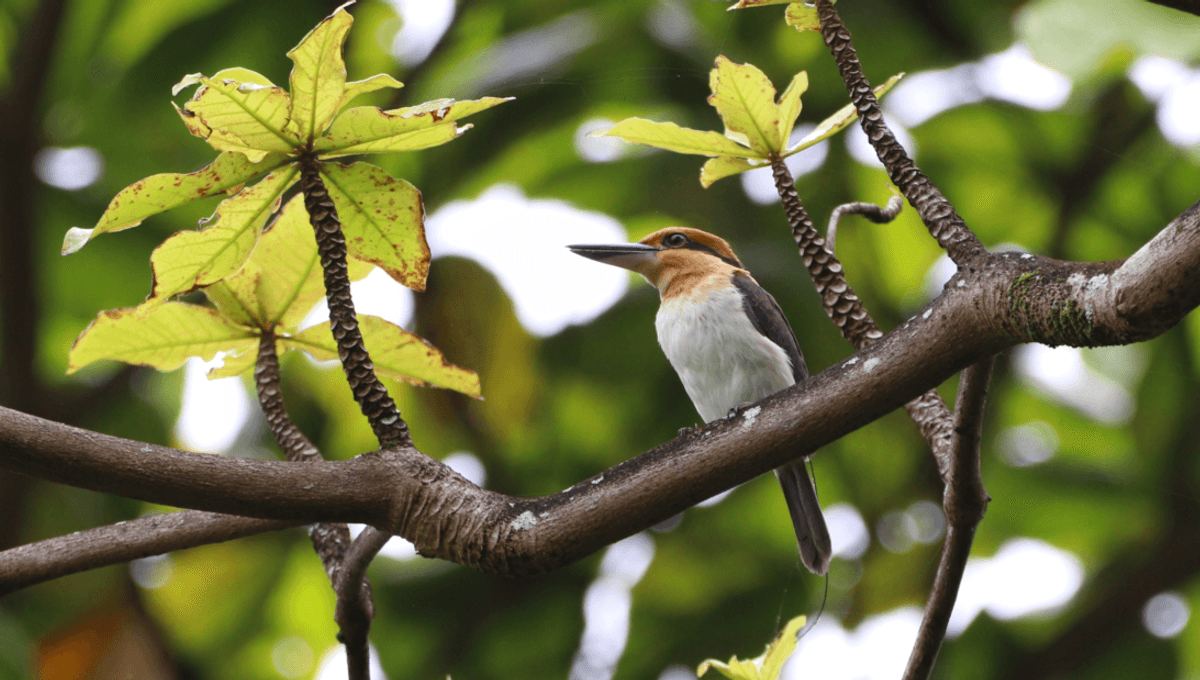
Some good news from the Palmyra Atoll: following its successful release back into the wild in 2024, the sihek – also known as the Guam kingfisher – has laid its first eggs in the wild in almost 40 years. These endangered birds went extinct from the wild back in 1988, but a few birds under human care got to work as part of a conservation program to save the species. Last year, they were given a new Pacific Island home that was protected and free from predators. With the arrival of their first eggs, it seems the birds are feeling right at home.
“We’re delighted that all nine of the birds are not only surviving on Palmyra Atoll, they’re already starting the next stage of their journey as we work to re-establish a thriving and fully self-sustaining Sihek population in the wild,” said Dr Caitlin Andrews, Bird Conservation Scientist with ZSL and TNC in a release. “It’s taken years of planning to get to this point, and it’s wonderful seeing their instincts kick in as they’ve been catching geckos and spiders and excavating nests. Their strength provides hope they will one day be back on Guam.”
The beautiful orange and blue sihek, Todiramphus cinnamominus, went extinct in its wild home of Guam and the surrounding islands in 1988. The driving force of their downfall was the invasive brown tree snake (Boiga irregularis), and as the population crashed, Guam biologists brought some of the birds under human care to begin a conservation program to save the sihek. It started with just 29 birds and boomed to 127 individuals across 25 institutions, until eventually a group were selected to be released back into the wild.
“AZA partners have proudly maintained the Sihek population in human care since 1988,” said Scott Newland, President & CEO of Sedgwick County Zoo, in a 2024 release. “Without the dedication of our aviculturists and the support of zoos, this release would not have been possible. Our work with this species has provided us with valuable knowledge, allowing us to tailor this release to give the birds the best chance for success.”
Success, it seems, was on the cards, as not even a year on from the announcement of their release we find ourselves with the happy news that the wild birds have started trying to have babies of their own. That said, the mated pairs are less than a year old, and it’s their first time incubating and caring for eggs, so it may take a few rounds of trying before we find ourselves with a wild chick.
Still, it marks an extremely positive step towards re-establishing these birds in the wild and serves as a happy reminder that with the right science and dedication, we do have the power to reverse biodiversity loss.
“After many long days last year looking after these birds when they were just tiny eggs and chicks, it’s so rewarding to see them beginning their journey towards raising their own chicks in the forests of Palmyra Atoll,” added Charlotte James, one of the London Zoo bird keepers who travelled to Sedgwick County Zoo to hand-rear the released birds. “It’s hard not to feel like a proud parent seeing them out there thriving and making history – and an honour to be part of the ongoing mission to bring Sihek back from the brink of extinction.”
Source Link: In 2024, "Extinct" Sihek Were Released Into The Wild After 36 Years. Now, They’ve Laid Their First Eggs